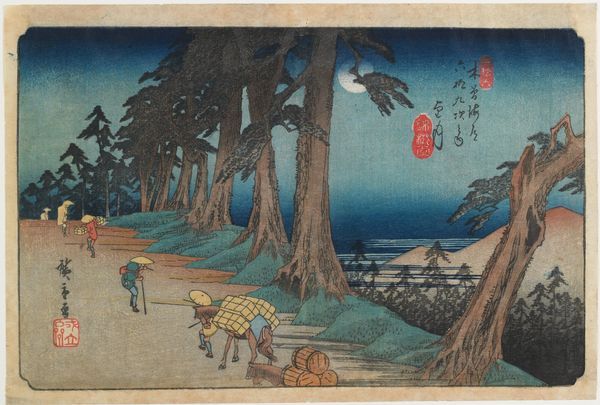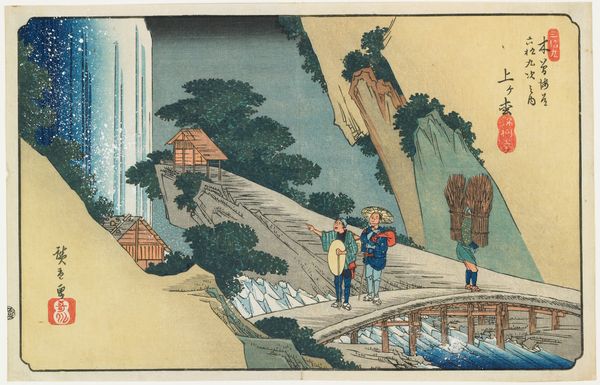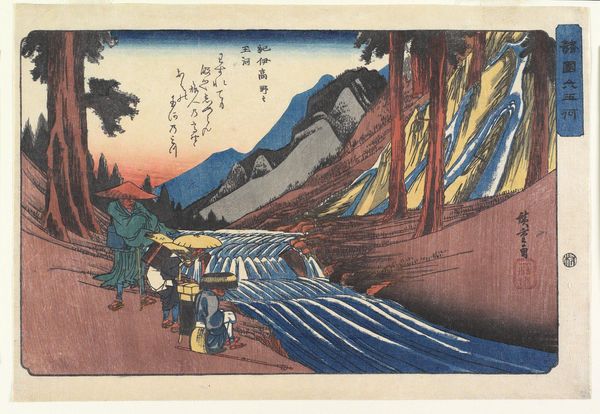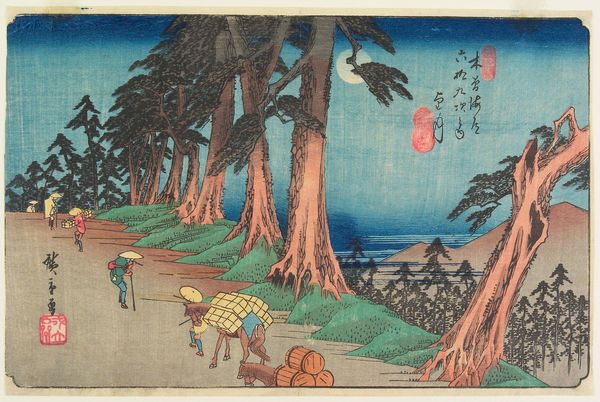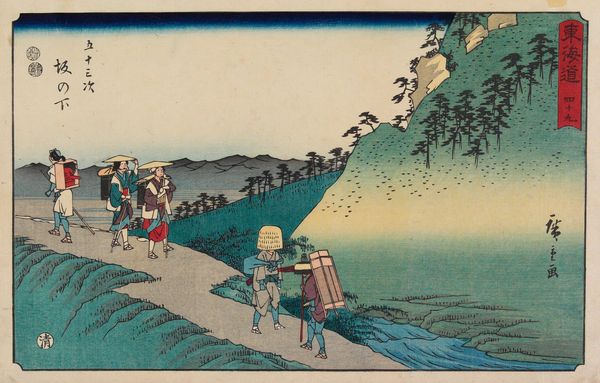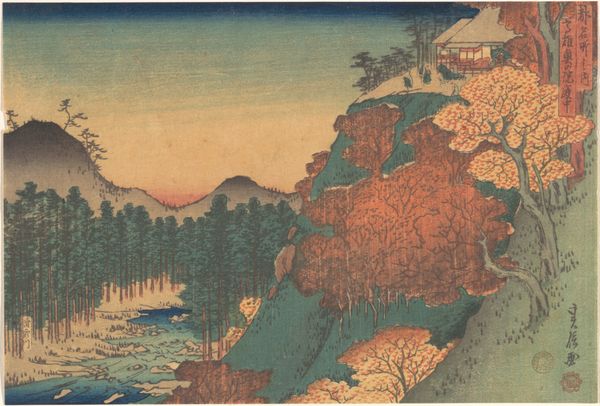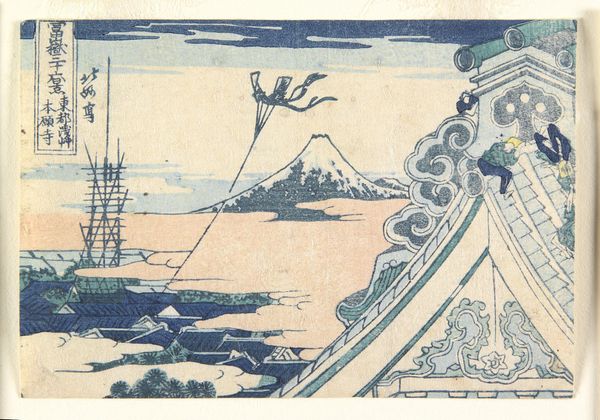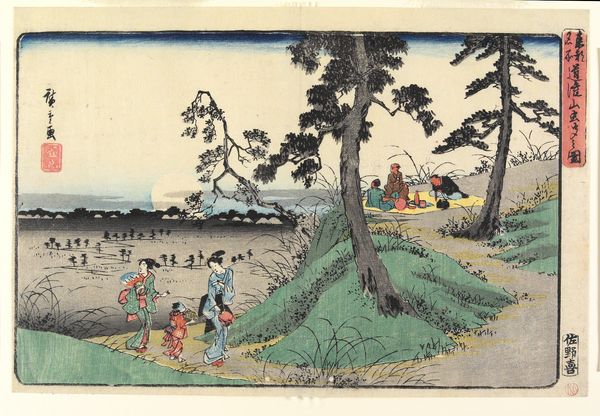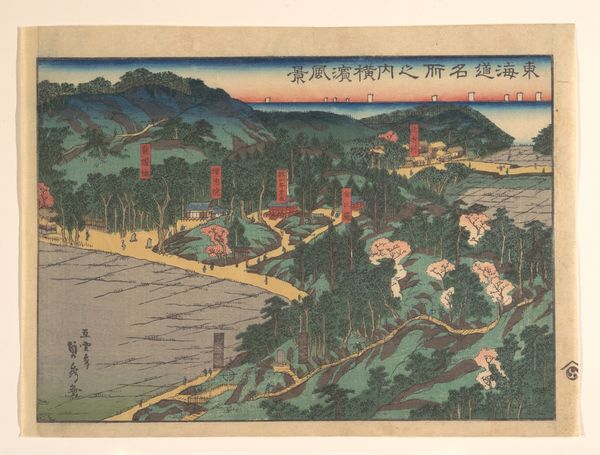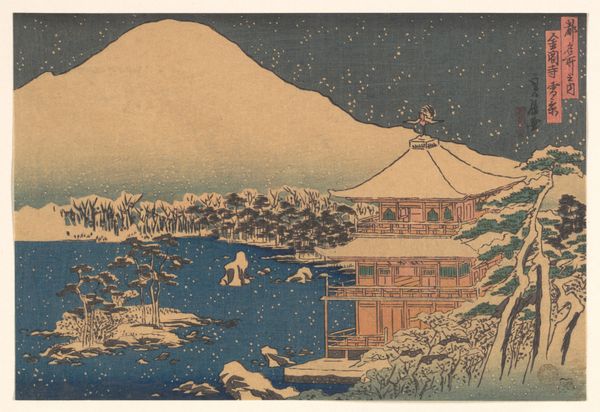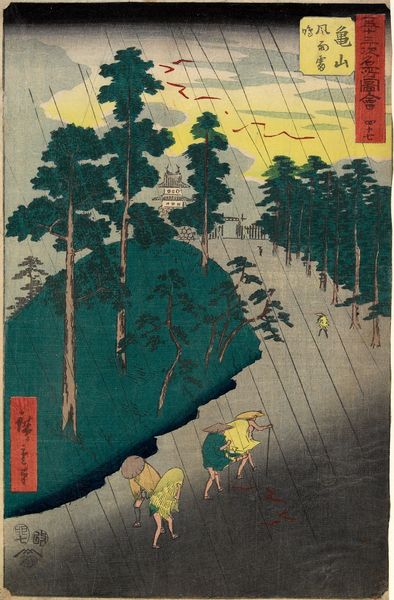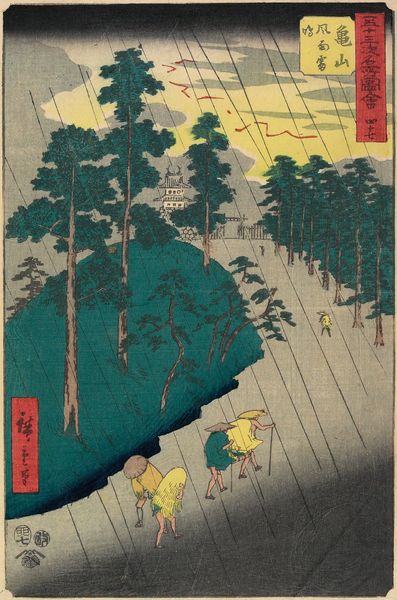
print, ink, woodblock-print
# print
#
landscape
#
ukiyo-e
#
ink
#
woodblock-print
#
orientalism
#
watercolor
Dimensions: 8 3/4 × 13 11/16 in. (22.2 × 34.8 cm) (image, horizontal ōban)
Copyright: Public Domain
Editor: This woodblock print, "Mount Akiba in Tōtōmi Province" by Utagawa Hiroshige, dating from around 1837, is quite captivating. The way the path draws you in, lined with those imposing trees... it feels very structured, but also a little lonely. What do you see in it? Curator: I see a layered commentary on the relationship between humanity, nature, and power structures. Hiroshige wasn't just capturing a scenic view; he was situating these figures within a broader cultural and political landscape. Notice the shrine gate—a clear marker of Shinto practice deeply entwined with Japanese national identity and the Emperor. How do these pilgrims relate to that institutionalized belief? Editor: They seem quite small, almost dwarfed by the landscape and the gate itself. Curator: Precisely. Consider the social context: The Tokugawa Shogunate, though in decline, still held considerable power. The average person's access to spiritual sites, to leisure, even to movement, was regulated. This print, through its composition, hints at that controlled experience. How do you interpret the rain? Editor: Perhaps it symbolizes hardship, or cleansing? Curator: It could be both! The rain could be seen as a metaphor for the difficulties of life under a rigid social system. Yet, ritual purification is also integral to Shinto. Do you think the artist offers a commentary on social hierarchies? Or perhaps focuses on personal spirituality in the face of such difficulties? Editor: That’s a great point. I hadn’t considered how the political climate might be influencing my reading of the artwork, thanks! Curator: And I appreciate your close look at the individual figures within this landscape; that shifts our interpretation too. It is vital to discuss and reconsider traditional views about artworks, opening ourselves to new analyses and interpretations, focusing on our historical time and the issues related to identity, gender, race, and politics that reflect our worldviews today.
Comments
No comments
Be the first to comment and join the conversation on the ultimate creative platform.
